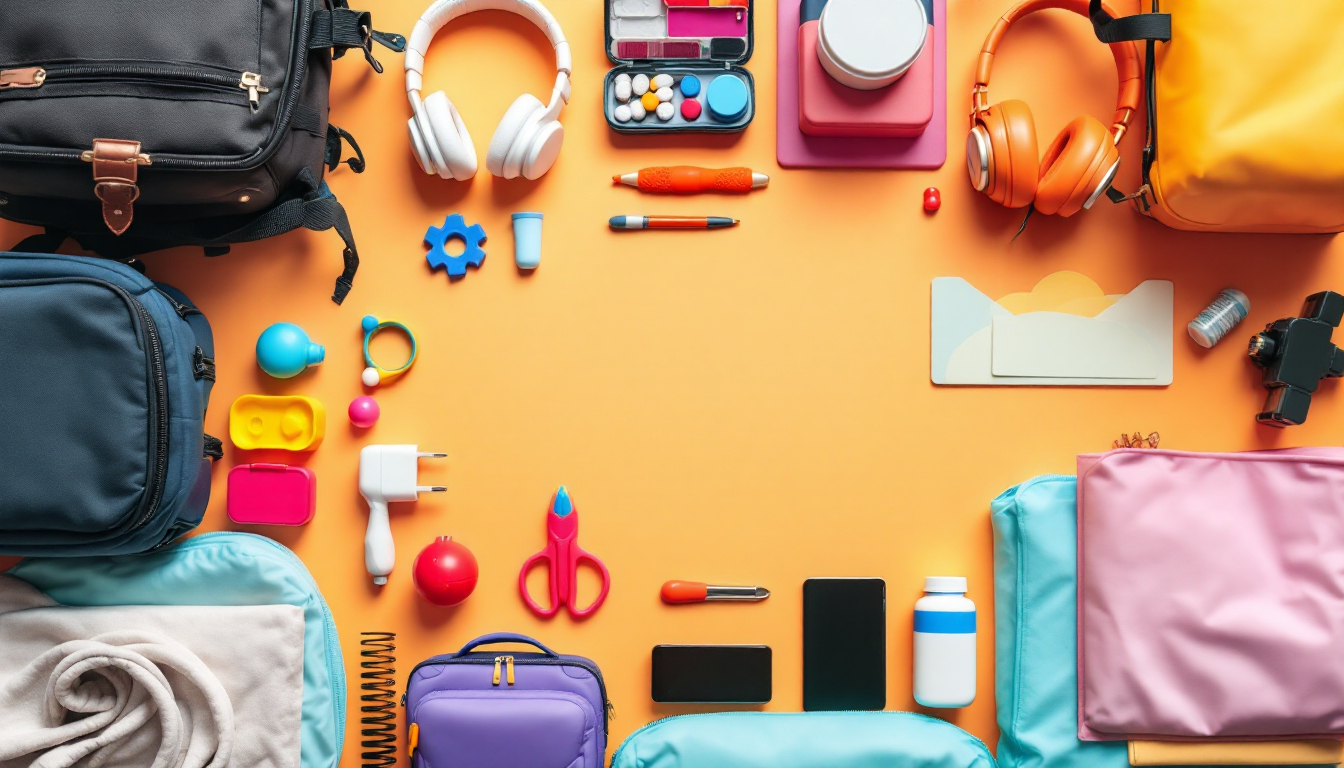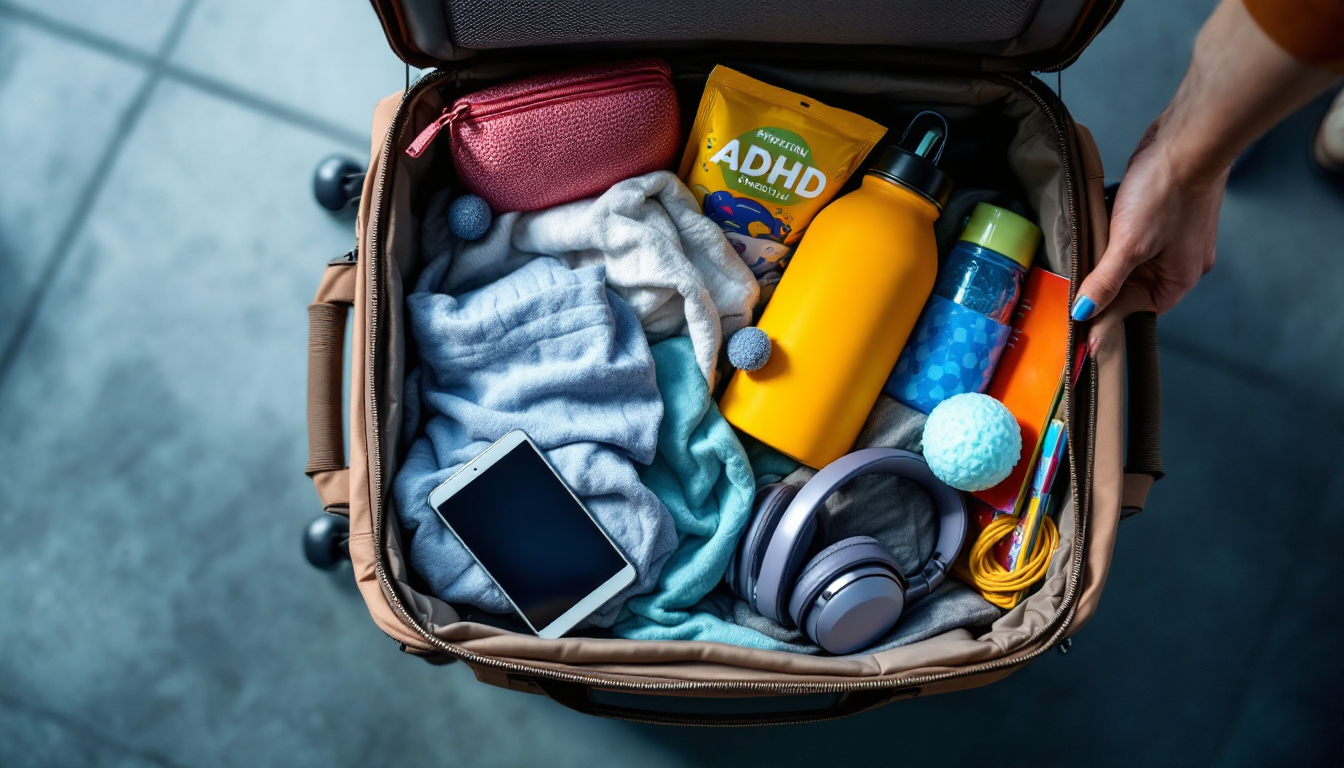Conquering Travel Chaos: Your ADHD-Friendly Packing Checklist for Family Trips

The excitement of a family vacation is often matched by the stress of preparing for it, especially for families with ADHD. The mental gymnastics of planning, organizing, and packing can feel like a monumental task, often leading to overwhelm and forgotten essentials. But what if you could trade that chaos for calm? For families navigating ADHD, structure and routine aren't just helpful; they're the secret ingredients to a successful and enjoyable trip. This guide is more than just a list; it's a strategy designed with the ADHD brain in mind, incorporating visual cues, sensory needs, and manageable steps to set your family up for a smooth journey.
Why ADHD-Friendly Packing Matters for Family Trips

Travel inherently disrupts the routines that help many individuals with ADHD thrive. The new environments, unpredictable schedules, and sensory overload of airports, new cities, and crowded attractions can be particularly challenging. Forgetfulness, a common trait of ADHD, can mean leaving crucial medications or comfort items at home. Impulsivity might lead to last-minute packing frenzies, and sensory sensitivities can turn a fun outing into a stressful ordeal. A well-thought-out, ADHD-friendly packing plan provides a predictable structure, minimizes last-minute panic, and ensures that you have the tools on hand to manage challenges as they arise, allowing the whole family to relax and make positive memories.
ADHD Travel Tips Before You Start Packing
A calm packing experience begins before the first item goes into the suitcase. Here’s how to set the stage for success:
- Stick to Familiar Routines: As much as possible, maintain regular mealtimes, medication schedules, and sleep routines in the days leading up to your trip. This stability can help manage the anxiety that comes with upcoming changes.
- Use Visual Schedules or Checklists: Create a visual timeline of the packing process. A large whiteboard or a dedicated app can map out what needs to be done each day. This makes the task less daunting and provides a sense of accomplishment as you check things off.
- Involve the Kids in the Process: Empower your children by giving them age-appropriate packing responsibilities. This not only lightens your load but also gives them a sense of ownership and control over their belongings. For younger kids, you can use picture-based lists.
- Start Packing Early and in Chunks: Avoid the last-minute scramble. Begin packing non-essential items a week or more in advance. Dedicate short, focused blocks of time to packing, for example, 30 minutes to pack toiletries or an hour for clothing.
The Ultimate ADHD-Friendly Packing Checklist

Break down the packing process into manageable categories to ensure nothing gets left behind.
Essentials for Everyone
These are the non-negotiables. Keep them together in a designated, easy-to-access travel document organizer.
- Identification: Passports, driver's licenses, birth certificates (if needed).
- Travel Documents: Tickets (plane, train, etc.), hotel confirmations, rental car information.
- Medications: A sufficient supply for the entire trip, plus a few extra days' worth in their original prescription bottles. Include a copy of the prescription.
- Chargers and Power Banks: For all electronic devices.
- Emergency Contacts & Itinerary: A printed copy for each family member and a digital version.
- ADHD-Specific Items:
- Fidget Tools: A variety of small, quiet fidgets to help with focus and anxiety.
- Medication Timer or App: To maintain a consistent medication schedule across time zones.
These items are crucial for comfort, regulation, and a sense of security.
- Favorite Comfort Items: A special stuffed animal, a favorite blanket, or a cherished book.
- Sensory Tools:
- Noise-Canceling Headphones: Essential for noisy airports, airplanes, or overwhelming environments.
- Chewelry or Chewable Toys: For oral sensory seekers.
- Weighted Lap Pad or Blanket: Can provide calming pressure during travel.
- Sunglasses or a Favorite Hat: To manage bright or visually stimulating environments.
- Visual Reminder Cards: Small, laminated cards with pictures or simple words for routines like "Brush Teeth" or "Quiet Time."
Travel Day Kit (Carry-On Essentials)

This bag is your in-transit lifeline. Keep it well-stocked and easily accessible.
- Snacks and a Reusable Water Bottle: Pack protein-rich snacks to help maintain energy levels and mood.
- A Full Change of Clothes: For each family member.
- Calming Activities: Coloring books, puzzle books, or a travel journal.
- Screen Time Gear: Tablet or phone with pre-downloaded, age-appropriate games, movies, and shows. Don't forget the headphones!
- Sensory Bag: A small pouch with a few favorite fidgets, a small container of scented putty, or a stress ball.
Staying Organized on the Road
Maintaining order within your luggage can prevent meltdowns and make finding items a breeze.
- Clear Pouches or Packing Cubes: Group like items together (e.g., socks in one cube, shirts in another). The clear design helps to see what's inside at a glance.
- Color-Coded Bags: Assign a color to each family member for their packing cubes, toiletries, and other personal items.
- A Master Checklist: Tape a copy of your packing list to the inside of each suitcase. This is invaluable for re-packing at the end of the trip to ensure nothing is left behind.
Bonus Tips for ADHD-Friendly Travel
- Use ADHD Apps or Reminders: Set phone alarms or use travel apps to keep track of your itinerary, medication times, and important reminders.
- Keep Routines Consistent: As much as possible, stick to your home routines for meals, medication, and bedtime. This creates a sense of normalcy and predictability.
- Reward Systems for Cooperative Travel: Acknowledge and reward positive travel behavior. This could be as simple as verbal praise or earning a special treat or activity.
- Schedule Downtime: Don't overschedule your days. Build in ample time for rest and decompression to prevent sensory overload and burnout.

Your Adventure Awaits!
Preparation is the key to transforming a potentially overwhelming experience into a joyful family adventure. This ADHD-friendly packing checklist for family trips is a starting point. Feel free to adapt it to your family's unique needs and preferences. By anticipating challenges and packing with intention, you can reduce stress and create more space for what truly matters: making wonderful memories together.
Was this checklist helpful? Please share it with other ADHD parents! What are your must-haves when traveling with ADHD?


